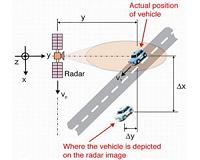 |
Paris, France (ESA) Feb 04, 2011 Auroras, more commonly known as the northern and southern lights, are one of the most beautiful and awe-inspiring natural phenomena. New insights into the processes that generate Earth's auroras (and those of other planets) are now being provided by a flotilla of ESA satellites, known as the Cluster mission, as they sweep through the region of space where these colourful curtains of light are created. As they fly in formation above the planet's poles, the Cluster spacecraft are gathering the first multi-point observations of auroral nurseries. The red and green emissions are most commonly created by beams of electrons that are boosted to high velocities by quasi-static parallel electric fields in the auroral acceleration region (AAR), located between 4000 and 12 000 km above the poles. The downward-moving particles collide with the upper atmosphere at altitudes of around 100 km, producing shimmering patterns in the night sky. "The AAR is a particle accelerator in space, similar to an electron gun in an old TV," said Arnaud Masson, ESA's deputy project scientist for Cluster. "It is fed by electrically charged particles that originate in the magnetotail, an elongated region of the magnetosphere located on the nightside of Earth." "The AAR is not permanent - it comes and goes," continued Masson. "In the absence of the AAR and Alfven waves, the aurora is diffuse or spread out, and not always noticeable to the naked eye. When the AAR is present, bright, discrete arcs can be seen, sometimes with 'black auroras' embedded." The existence of the AAR has been known for decades. However, there are still many open questions about auroras, including the altitude distribution and stability of the electric fields which accelerate the particles inside these regions. Now, by analysing the new data from Cluster, these open issues can be tackled for the first time.
Cluster multipoint studies For the first time, in Spring 2009, scientists could make use of this natural orbital drift to obtain simultaneous measurements of the AAR with more than one satellite. Some of the first results from the AAR data campaign are published by a team of European and American scientists in the 1 February 2011 issue of the prestigious journal Physical Review Letters. Their paper details the observations made by the Cluster C3 and C1 satellites on 5 June 2009, when they made an oblique crossing of the dusk-side auroral oval between 16:55 and 17:15 UT. At that time, C1 was flying at an altitude of 9000 km, some 2600 km above its sister craft but lagging about 5 minutes behind. Subsequent analysis of data from the EFW electric field and waves, FGM magnetic field, PEACE electron and CIS ion instruments enabled the team to conduct a unique study of the physical state of the AAR during the flybys. The dual observations revealed spatial and temporal variations in the electric fields and associated particle signatures For the first time it was possible to constrain the size and longevity of these regions. The data showed that the electric field structures measured at least 800 km across and remained stable for at least 5 minutes. The measurements also revealed the 2-D morphology and altitude distribution of the acceleration (electric) potential. They showed that two broad, U-shaped potentials at higher altitude formed a single, combined structure with a narrow, S-shaped potential at lower level. "The data from this and other events are revealing how the acceleration region and the associated electric potential pattern evolve in time and space, and the time scales over which they can be regarded as stable," said Professor Goran Marklund from the Royal Institute of Technology, Stockholm, Sweden, who is lead author of the paper. "These new results do not yet provide a complete explanation of the dynamics of the aurora, since the Cluster instruments are not optimised for measuring this region, but they provide important constraints on how these structures are created. They also provide inputs for simulations and for future multi-point missions that will explore near-Earth space. Similar space plasma processes occur throughout the Solar System, so a greater understanding of Earth's auroras has implications far beyond our own planet," he added.
Share This Article With Planet Earth
Related Links ESA Cluster Earth Observation News - Suppiliers, Technology and Application
 Traffic Monitoring With TerraSAR-X/TanDEM-X Satellite Constellation
Traffic Monitoring With TerraSAR-X/TanDEM-X Satellite ConstellationBonn, Germany (SPX) Jan 31, 2011 Traffic monitoring from space, day and night, from more than 500 kilometres up above; is that possible? Indeed it is! In fact, it has been demonstrated several times in the past - once with the Shuttle Radar Topography Mission (SRTM), and again with TerraSAR-X. The traffic processors used with SRTM and TerraSAR-X were and are still subject to considerable limitations. To determine vehicle ... read more |
|
| The content herein, unless otherwise known to be public domain, are Copyright 1995-2010 - SpaceDaily. AFP and UPI Wire Stories are copyright Agence France-Presse and United Press International. ESA Portal Reports are copyright European Space Agency. All NASA sourced material is public domain. Additional copyrights may apply in whole or part to other bona fide parties. Advertising does not imply endorsement,agreement or approval of any opinions, statements or information provided by SpaceDaily on any Web page published or hosted by SpaceDaily. Privacy Statement |